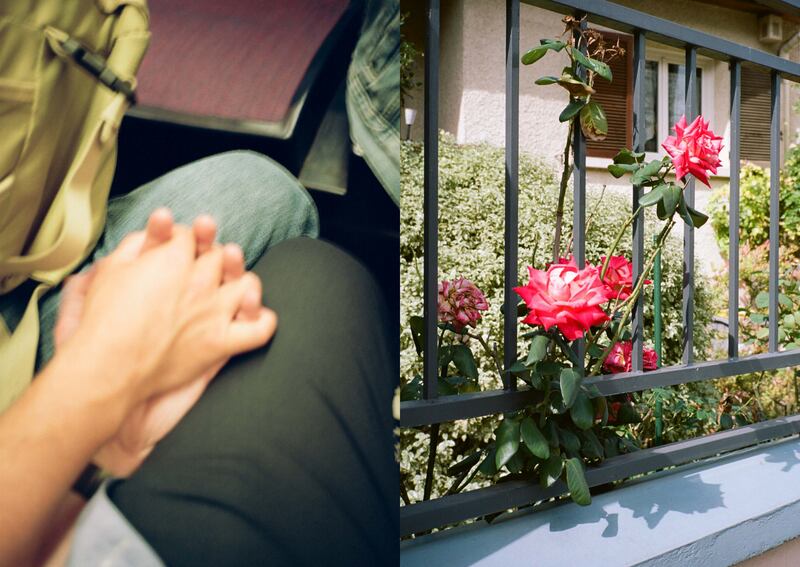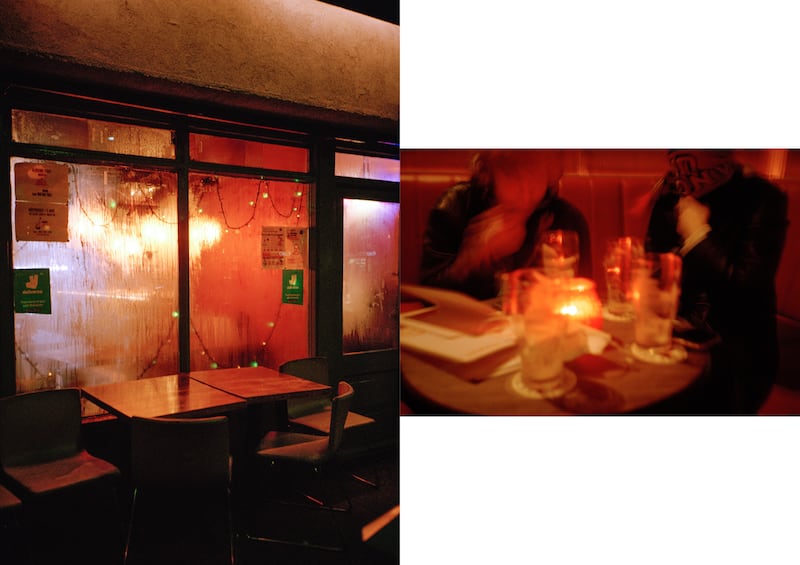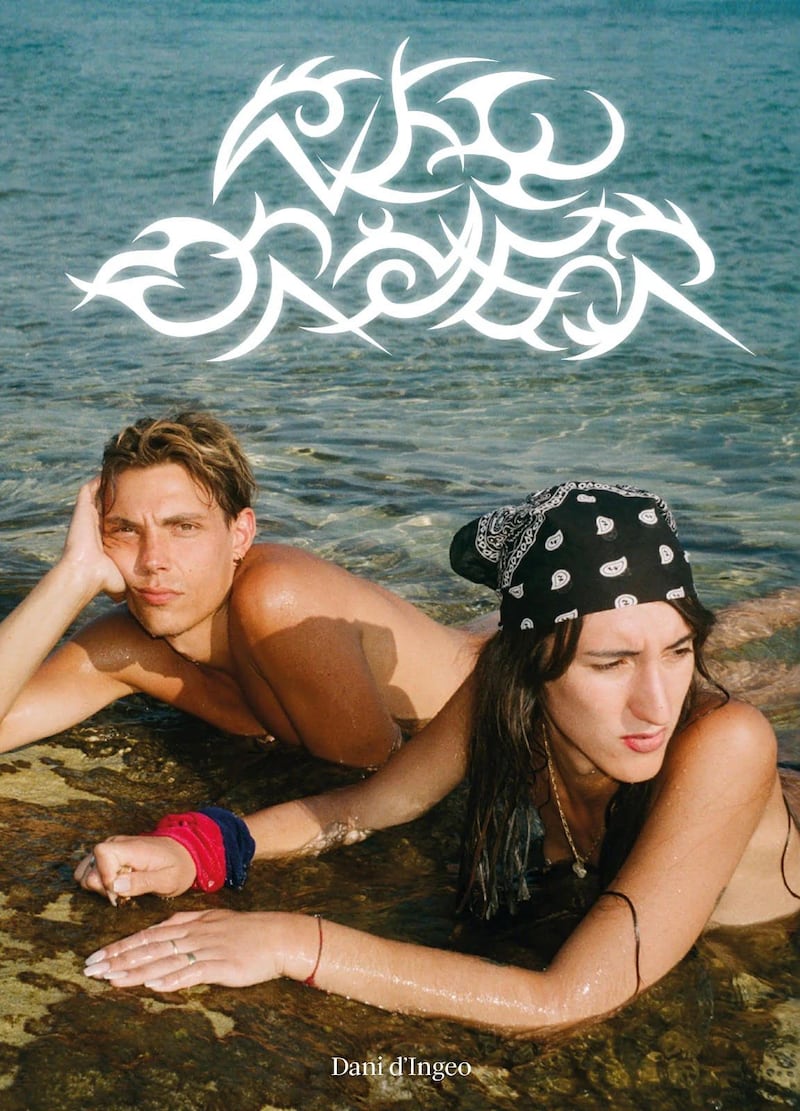Jack Scollard and Jordan Hearns are the founders of Smut Press, a publishing project that provides a platform for queer artists, and where the ghosts, aspirations and adventures of night-time loom large.
The two London-based Irish artists had collaborated on a photography zine, Reverie, in 2020. The following year Hearns was inspired by a student exhibition at Paris Photo fair. “Everyone said they were making work for themselves and their friends,” he says. A penny dropped: he and Scollard should adopt the same approach in Ireland by, with Smut, starting something interesting.
Reverie contained the DNA of what would become Smut’s ongoing series of publications. The zine’s photographs, in which sweat and fog machines almost became characters, were often rooted in the now-closed Dublin DIY space Jigsaw. When they printed the second edition, more stockists came on board.
The goal of Smut, says Scollard, is to “champion work that might find it difficult to get published elsewhere – maybe a bit risqué or provocative. But the main basis is that we want to work with queer artists. Their work can get a little bit overlooked and under-represented. But there’s not necessarily any kind of driving sentiment. A lot of it is people we have built up relationships with over the years, so it feels very organic.”
RM Block
Hole in the Head, the press’s first zine, by Scollard, is a collection of photographs encompassing portraiture, clubbing and bodies. “My life feels really shaped by nightlife,” says Scollard. “It’s been the foundation of so many friendships since I moved to London. It’s helped me find housing; it just feels that it’s such a central part of my life and sense of belonging.” He cites the club Fold, in east London, as particularly important. “It’s funny – that’s a place where a lot of friendships were made, and led on to things that I wouldn’t have imagined.”
Hearns nods in agreement. “I echo that. I come from a music background. I’ve been in bands for years. So when I started clubbing, it was for music. I came out, started going to queer clubs; going to Jigsaw, specifically, was quite formative for me. Me and Jack became close by going to Jigsaw together, going to nights like Dip, and whatever else was on.”
Smut’s second zine, Feel Me, I’m Here with You, by Hearns, is a “romantic chronicle” of photographs produced over the course of the year in Dublin, Lisbon, Paris and London. Blurred city lights from bridges, airline views of clouds, clasped hands and bedroom doors all detail moments of movement and pause.
The Horny of Plenty, by Scollard, documents a year of living in London, from lake swims to house parties. The photographs in Close One’s Eyes, by Peter Greene, offer moments of diffuse beauty in bedrooms and bars. Dani d’Ingeo’s New Order is rooted in southern Italy, where “as a queer child and teenager they often felt rejected” but returned “to establish a new, renovated connection with their roots”.



At the 2023 Tsundoku Art Book Fair in Dublin, Smut Press showcased What Began as Desire, a collection of postcards by 11 artists – David Lindert, Issey Goold, Michele Baron, Léann Herlihy, Tobias Huschka, Augustin Puzio, Brian Teeling, Tyler Kelly, Kyle Quinn, Simon Dyer and Nicholas Flanagan – plus an essay by the curator Iarlaith Ní Fheorais.
Just three years after that Paris Photo moment, a bit of a full-circle moment is in the offing, as Smut has been invited to next month’s Paris Ass Book Fair, “which is one of the largest queer book fairs probably going on in the world right now,” says Scollard. They’re keeping under wraps the new publication and project that they’ll be presenting at Palais de Tokyo.

An inspiration for Scollard is Spyros Rennt, the Berlin-based Greek photographer, whose most recent published work is the book Corporeal, as well as the London photographer Roxy Lee. Hearns foregrounds the influence of the Dublin artists Brian Teeling and Dorje de Burgh. “I was influenced obviously by Wolfgang Tillmans, but I think for me it came back to that local level, where I was seeing the way they worked, and the way they produced work. Also people from Jigsaw, seeing their resilience in producing work, helped me a lot in terms of feeling comfortable doing what we do. Dorje is incredible. He’s probably my favourite Irish artist. His work is amazing. He’s a big influence. His attitude towards photography and representation of himself was really formative for me, still is and always will be.”
Smut’s progress appears as exciting to its founders as it does to its audience. “I feel really proud of it as a project,” says Scollard. “I never anticipated it getting to this point. You start off on a project and you never know if it’s going to stick or not. There was always a chance that we might have done that first publication and run out of steam. It does require a lot of energy to keep sustaining things, but it’s a snowball effect. You get more people involved, more people take interest, more people want to be a part of it. It just builds.”




















